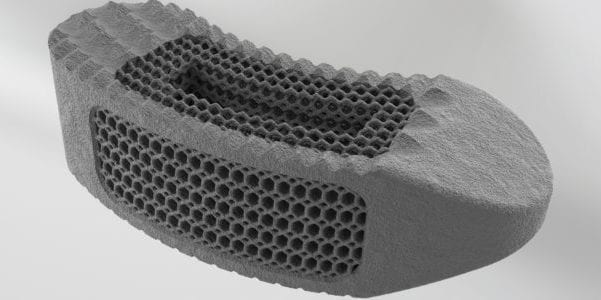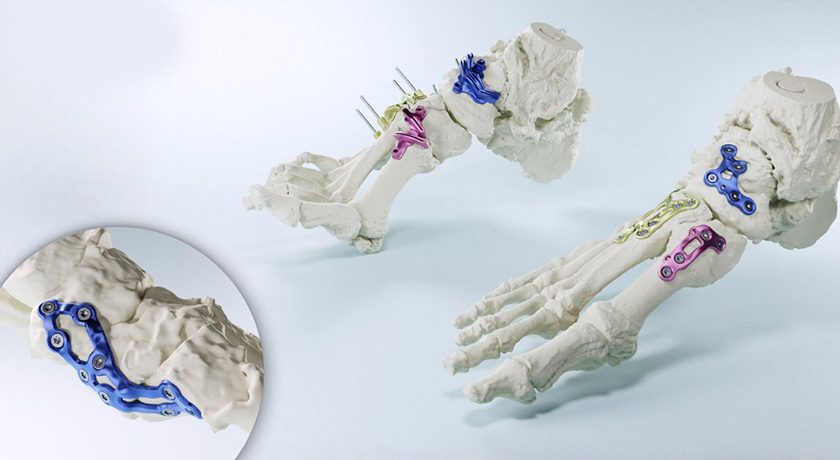

 Copy to clipboard
Copy to clipboard 
Zimmer Biomet launched the TrellOss™-TC (TLIF curved) Porous Titanium Interbody Platform. The 3D-printed titanium interbody features a scaffold structure with 70% porosity and a 7 micron roughened surface topography to support adhesion and bone ingrowth, and includes an integrated articulating mechanism which allows the implant to pivot in situ up to 55°.
TrellOss-TC, TrellOss-C (cervical) and TrellOss-TS (TLIF straight) comprise the company’s first porous titanium implant platform manufactured through a 3D printing/additive manufacturing process. The company plans to add lateral, anterior and stand-alone devices in 2020.
“We are very excited to announce the launch of the TrellOss Platform,” commented Jim Cloar, President of Zimmer Biomet’s spine division. “3D printing allows us to create a 7 micron surface roughness over the entire implant rather than on the endplates alone. Combined with varying pore sizes of 300, 500 and 700 microns, this surface technology creates an amicable environment for bone ingrowth.”
Zimmer Biomet launched the TrellOss™-TC (TLIF curved) Porous Titanium Interbody Platform. The 3D-printed titanium interbody features a scaffold structure with 70% porosity and a 7 micron roughened surface topography to support adhesion and bone ingrowth, and includes an integrated articulating mechanism which allows the implant to pivot in...
Zimmer Biomet launched the TrellOss™-TC (TLIF curved) Porous Titanium Interbody Platform. The 3D-printed titanium interbody features a scaffold structure with 70% porosity and a 7 micron roughened surface topography to support adhesion and bone ingrowth, and includes an integrated articulating mechanism which allows the implant to pivot in situ up to 55°.
TrellOss-TC, TrellOss-C (cervical) and TrellOss-TS (TLIF straight) comprise the company’s first porous titanium implant platform manufactured through a 3D printing/additive manufacturing process. The company plans to add lateral, anterior and stand-alone devices in 2020.
“We are very excited to announce the launch of the TrellOss Platform,” commented Jim Cloar, President of Zimmer Biomet’s spine division. “3D printing allows us to create a 7 micron surface roughness over the entire implant rather than on the endplates alone. Combined with varying pore sizes of 300, 500 and 700 microns, this surface technology creates an amicable environment for bone ingrowth.”

You’ve reached your limit.
We’re glad you’re finding value in our content — and we’d love for you to keep going.
Subscribe now for unlimited access to orthopedic business intelligence.
JV
Julie Vetalice is ORTHOWORLD's Editorial Assistant. She has covered the orthopedic industry for over 20 years, having joined the company in 1999.







